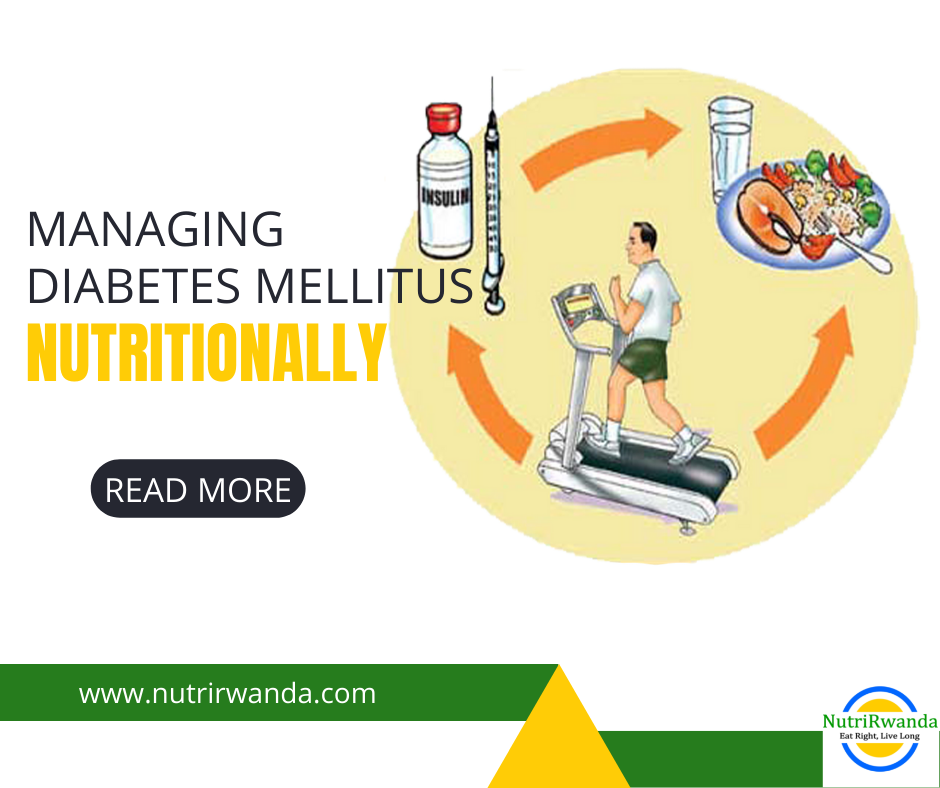Diabetes mellitus is a chronic metabolic condition in which the pancreas no longer produces enough insulin (impaired insulin secretion) or cells stop responding to the insulin that is produced (insulin resistance) resulting in increased blood glucose.
The prevalence of Diabetes in our country of Rwanda, according to WHO – Diabetes country profiles
- 3 % of total population have diabetes
- 2.7% of male with diabetes
- 3% of female with diabetes
- With 1,918 diabetes related deaths per year
Contributes to development of other life-threatening disease: Heart disease and kidney failure
CLASSIFICATION AND ETIOLOGY OF DIABETES
Four main etiological and clinical classes
• Type 1 diabetes: Results from Beta cell destruction, usually leading to absolute insulin deficiency
• Type 2 diabetes: Results from a progressive insulin secretory defect following insulin resistance
• Secondary diabetes: e.g. pancreatic diseases, genetic defects in cell function, genetic defects in insulin, chemical and drugs induced diabetes such as ARVs, infections etc
• Gestational Diabetes:is Carbohydrate intolerance that begins or is first recognized during pregnancy. It is closely related to type 2 diabetes.
SYMPTOMS OF DIABETES MELLITUS
- Excessive urine production (Polyuria)
- Dehydration, dry mouth
- Excessive thirst (Polydipsia)
- Weight loss
- Excessive hunger (Polyphagia)
- Blurred vision
- Increased vision
- Increased infections
- Fatigue
DIABETES NUTRITION MANAGEMENT TIPS
Requires lifelong treatment
- BALANCING MEALS
- MEDICATION
- EXERCISE
Treatment goals
- Maintain blood glucose levels within a desirable range
- Prevent or reduce the risk of complications
- Maintain healthy blood lipid concentrations, control blood pressure, and manage weight
BALANCING MEALS
Dietary Recommendations
Glycemic index: The glycemic index is a number given to foods that identifies how much it will affect your blood sugar level Higher numbers are given to foods that raise blood glucose levels more than those with lower numbers.
RECOMMENDED SOURCES
- VEGETABLES
- Cabbage
- Spinach
- Dodo
- Pumpkin
- Broccoli
- Isombe
- Igisura
- Cauliflower
- Mushrooms
- Onions
- Carrots
- Tomatoes
- Pepper
- Lettuce
- Cocumber
- FRUITS
- Lemon
- Orange
- Papaya
- Pineapple
- Strawberries
- Passion
- Gueva
- Tomato tree
- Apple
- Mango
- WHOLE GRAINS
- Barley
- Brown rice
- Buckwheat
- Bulgar (cracked wheat)
- Millet.
- Oatmeal
- Popcorn
- Whole-wheat bread, pasta or crackers.
- LEGUMES
- Beans
- Peas
- Lentils
- MILK PRODUCTS
- Cheese
- Milk
- Fresh milk
- SUGARS
- Minimize added sugars
- Sugary foods counted in the daily carbohydrate allowance
- Fructose as an added sweetener is not advised
- Artificial sweeteners can be used safely
- WHOLE GRAINS AND FIBER
- Recommendations similar to those for the public: include fibre-rich foods
- DIETARY FAT
- Increase omega-3s from fatty fish or plants
- Saturated fat: from red meat, Regular Cheese, Sausage, bacon,..<10% of total calories
- Trans fat: minimized from processed food
- Cholesterol: <300 milligrams daily
- PROTEIN
- Similar to the general population
